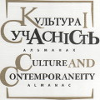ВІТЧИЗНЯНА ГУМАНІСТИЧНА ТРАДИЦІЯ ТА УКРАЇНСЬКА ЛЕКСИКА – ПЕРШОДЖЕРЕЛА ДЛЯ НАУКОВОЇ ТЕРМІНОЛОГІЇ З ФАХОВИХ НАПРЯМІВ ТВОРЕННЯ СЕРЕДОВИЩА
Domestic Humanistic Tradition and Ukrainian Vocabulary as Primary Sources for Scientific Terminology in Professional Areas of Environment Creation
Author(s): Serhii TsarenkoSubject(s): Architecture, Visual Arts, Aesthetics, Sociology of the arts, business, education, Environmental interactions, Sociology of Art
Published by: Національна академія керівних кадрів культури і мистецтв
Keywords: Architecture; harmony; design; Living Word; architectonics; architectonic urban development; composition; leepota; urban planning; creating the environment; terminology; philosophy of hierarchy of env
Summary/Abstract: The purpose of the article is to find domestic lexical definitions of architecture, urbanism, and environmental design. The methodology of the research is an interdisciplinary synthesis of knowledge based on dialectics (H. Hegel) and the general theory of systems (L. von Bertalanffy). Scientific novelty. For the first time, the author has analysed the problem of the completeness of the domestic terminology on environment creation to express original meanings according to the Cyrillic humanistic tradition, and specialisations of activity. It has been proposed to introduce into scientific circulation a general definition of a group of professional artistic directions for creating an environment for human life as a hierarchical environmental image creation, the purpose of which is the integral beauty of spatial forms. Conclusions. The content of the borrowed terminology requires a more careful selection, as it is intended to enrich the vocabulary and clarify relevant industry concepts and professional specialisations, in particular, according to international qualification definitions. However, lexical borrowings do not have sufficient potential for worldview, mental-cognitive compliance with the national linguistic environment. In order to ensure national philosophical goal setting, in accordance with the national Slavic-Greek-Latin tradition of a complete and true Living Word, we need, along with borrowed names and terminology, to use primarily national, including Old Slavic, vocabulary in quality of the main methodological one. The domestic humanistic tradition, the peculiarities of word formation and the lexical fund of the Ukrainian literary language make it possible to return to wider use the national name of the content and purpose of an artistic composition (leepota) and to introduce into scientific circulation the natural definition of object-spatial arts, namely "environmental imagery" as well as «hierarchical environmental imagery».
Journal: Культура і сучасність
- Issue Year: 2022
- Issue No: 2
- Page Range: 123-128
- Page Count: 6
- Language: Ukrainian

